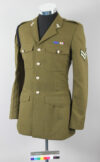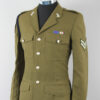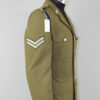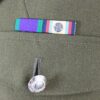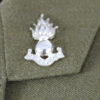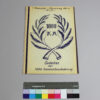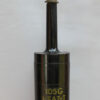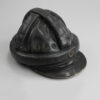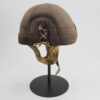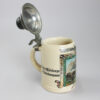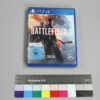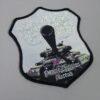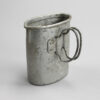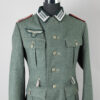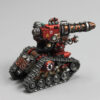Uniform of a British Corporal of the 32 Armored Engineer Regiment, ca. 1991
Inventory number: DPM 1.130
In 1945, the British Army occupied northern Germany. As part of the British occupation zone, British soldiers were quartered there, but they gradually withdrew when the Federal Republic of Germany was founded in 1949. However, British soldiers remained in West Germany even after the Occupation Statute expired in 1955. As part of NATO and in the ongoing Cold War, they were present on the “front” of the Warsaw Pact. As Lower Saxony would have been the battlefield in the event of a “hot” war, plans for an emergency were regularly practiced in manoeuvres.
One of the types of troops stationed in West Germany for the long term were the “Royal Engineers”, British engineer units also known as “sappers”. During the Cold War, the “sappers” were to receive their orders before the armored combat troops in order to prepare the terrain for combat. This could mean, for example, laying minefields and creating or destroying infrastructure. In 1964, the British Army set up the 32 Armored Engineer Regiment and equipped it with pioneer vehicles based on the Centurion, such as armoured bridgelayers, armoured engineer vehicles (AVRE) and armoured ramp carriers (ARC) with scissor bridges.
This uniform belonged to a member of the British 32 Armored Engineer Regiment. The British Army introduced this khaki uniform type in 1902. Since then, the “No. 2 Dress” has changed little; in 1960, the collar shape and material were adapted, although different material types and color shades remained. The “Sappers” were frequently restructured and transferred, and in 1981 the regiment moved to Munster. The emblem of the “Sapper” is a burning grenade, which has included the motto “Ubique” – Latin for “Everywhere” – since 1922. As can be seen from the uniform’s ribbon clasps, the corporal to whom the uniform belonged was not only deployed in Germany. The ribbon clasps on the General Service Medal for service in Northern Ireland in the 1970s and the Service Medal for service in the Gulf War in 1991 show his participation in these British Army missions. During the Northern Ireland conflict, the British Army used the “Sappers” to fortify and build police stations and prisons to protect them from improvised grenades and bombs. They also removed road barricades and carried out infantry tasks. In the 1991 Gulf War, for example, members of the Engineer Regiment laid minefields and took part in the reconstruction of civilian infrastructure after the end of hostilities.
With the end of the bloc confrontation, Great Britain massively reduced its military presence in Germany. The 32 Armored Engineer Regiment left Munster together with the other British units in 1993, and the museum received the uniform as part of the regiment’s farewell ceremony.
Object of the month
(short) stories from the depot
Unfortunately, many objects cannot currently be shown in the exhibition for conservation reasons. Here you will find unusual objects and exciting stories of special pieces from the depot

